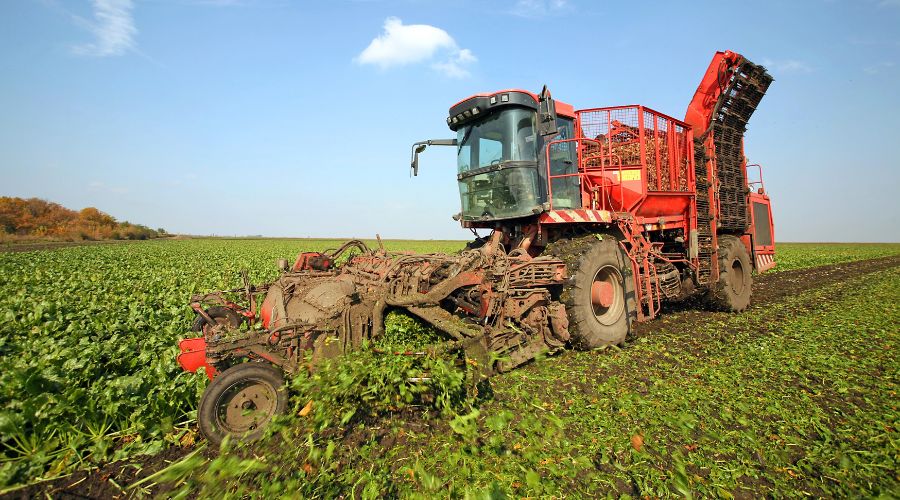BBRO advises how to recover more yield from your fields
24th October 2024
Unseasonably warm conditions have continued to allow sugar beet crops to remain green and productive, helping to further improve root yield and sugar content, the British Beet Research Organisation has reported.

The BBRO experts said experience shows that while conditions remain conducive to growth, selecting the best crops to optimise yield potential can still be worth an additional five to 10% of yield in November.
Therefore, growers have been advised to inspect their fields closely before deciding on which field to lift first.
The sugar beet experts have noted that some varieties develop a yellowing of the canopy and is fairly
uniform across the crop and is unlike virus yellows.
From observations, this would appear to relate to a number of seasonal factors and has been noted in previous years, they added.
BBRO has shared several tips for sugar beet growers that could help them recover more yield:
- Consider lifting crops in heavy land or poor draining soil early.
- Monitor canopy cover for damage; foliar diseases, virus and/or beet moth. The weakest canopy should be lifted first as it will be less likely to benefit from autumn growth and more at risk from frost
- Areas with poor establishment should be next in line. The crop is unlikely to fill out and the poor patches are likely to be more susceptible to disease or frost damage.
Soil health assessments
A spokesperson for BBRO said that preserving sugar content is very important, especially while temperatures remain warm.
“Keep harvest and clamping damage to a minimum to reduce sugar loss whilst also targeting optimum crowning for root recovery whilst not delivering excessive green material.
“Whilst ‘just in time’ deliveries will be the most beneficial, it may be that a short-term clamp is required. With temperatures still relatively warm, ensure these are not piled too high, allowing for as much air flow as possible and avoid too much soil and green material in clamps,” they added.
BBRO reported that they have not received any reports of root rots, but the experts would urge growers to monitor crops carefully for incidence.
They said: “A change to wetter conditions may encourage secondary infection, so ensure crops with any rots are harvested and delivered as soon as possible to avoid further losses.
“Check carefully for root rots in crops where beet moth feeding may have damaged the crown. Soil health assessments.”
The BBRO team has also pointed out that autumn is the ideal time to make soil health assessments.
It is simple and practical to undertake, and it will provide essential information on the health status of growers’ soil.
“Not only will this allow you to build up your records, an essential part of the ELMS and SFI initiative, it will also allow you to identify where soil health improvement may be required as well as allowing you to compare the effectiveness of any soil health improvement practices you have already deployed,” sugar beet experts added.
BBRO data shows that sugar beet responds very well to improving soil health, with better yields and greater resilience to challenges such as drought.
See BBRO’s harvester assessment guide for more information.
Read more sugar beet news.
